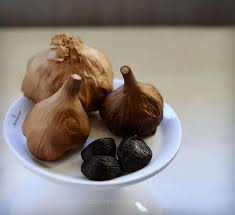Manu was a great sage and a seer.
He was considered as Progenitor of Mankind. Historically, he belongs to the second millennium
B.C. His monumental work is
Manusmruti. It is a voluminous Code of
Civil, Criminal, and Religious Laws and Traditions pertaining to the people of
BharataVarsha or India. It is respected
as great and original DharmaSastra.
1. The Force of desire is described here:-
Na Jaathu kaamah kaamaanaam Upabhogena Saamyathi l
Havishaa krushna-varthmena Bhooya eva abhivardhathe ll 1 ll
Desire can never be quenched by the enjoyment of desired objects. It grows more and more by enjoyment like fire
by the offerings of ghee.
Desire can be quenched only by controlling senses, but not by enjoying
sensual objects. Enjoyment leads to
greed and distress.
2. There are five respectable things in society:-
Vittham Bandhur Vayah Karma Vidhyaa bhavathi panchamee l
Ethaani Maanya-sthaanaani Gareeyo yadhyadhuttharam ll 2 ll
Wealth, Relation, Age, Profession and Learning - these five are
respectable things - the latter one being more respectable than the former in
the sequence.
The factors (Wealth, etc.,) command respect naturally. But when a clash arises between them the
latter one in the sequence must be accepted as more respectable. So, Knowledge or Learning is the most
respectable among all factors.
3. The nature of Dharma is given here in a nustshell:-
Dhruthih Kshamaa Dhamo(a)stheyam Soucham Indhriya-Nigrahah l
Dheer Vidhyaa Sathyam Akrodho Dhasakam Dharma-lakshanam ll 3 ll
Firmness, Tolerance, Self-restraint, Non-stealing, Cleanliness, Control
of Senses, Good understanding, High
learning, Truth and Not getting Anger - these ten constitute Dharma.
Dharma is not an abstract idea.
It is realized through the observation of these virtues.
4. Contentment is the root cause of happiness:-
Santhosham Paramaasthaaya Sukhaarthee Samyatho Bhaveth l
Santhoshamoolam hi Sukham Dhuhkhamoolam Viparyayaha ll 4 ll
One must possess contentment along with self-Control if he wishes to
have real happiness, because contentment produces happiness and discontentment
leads to distress.
Happiness and distress are nothing but contentment and discontentment
respectively.












